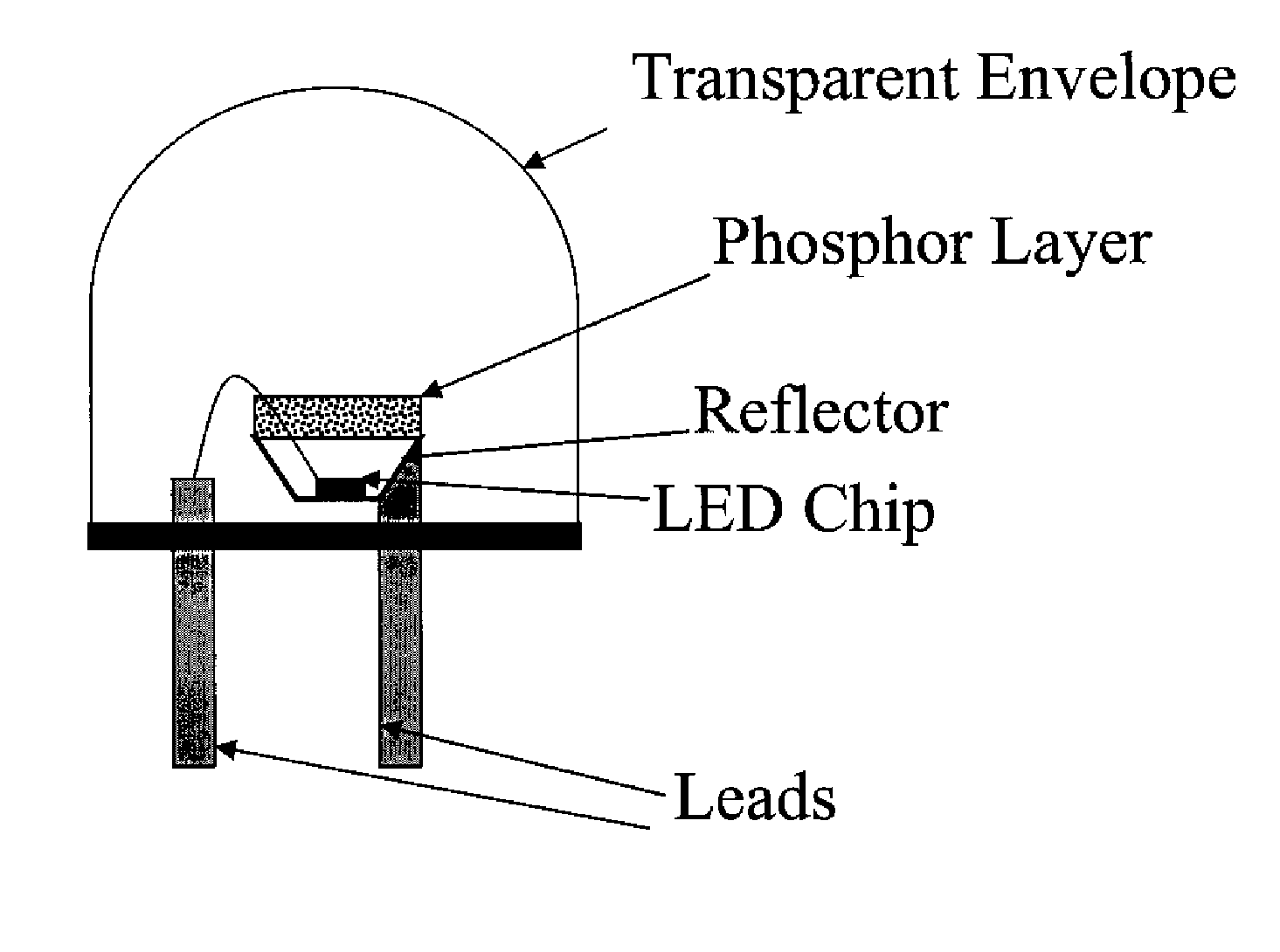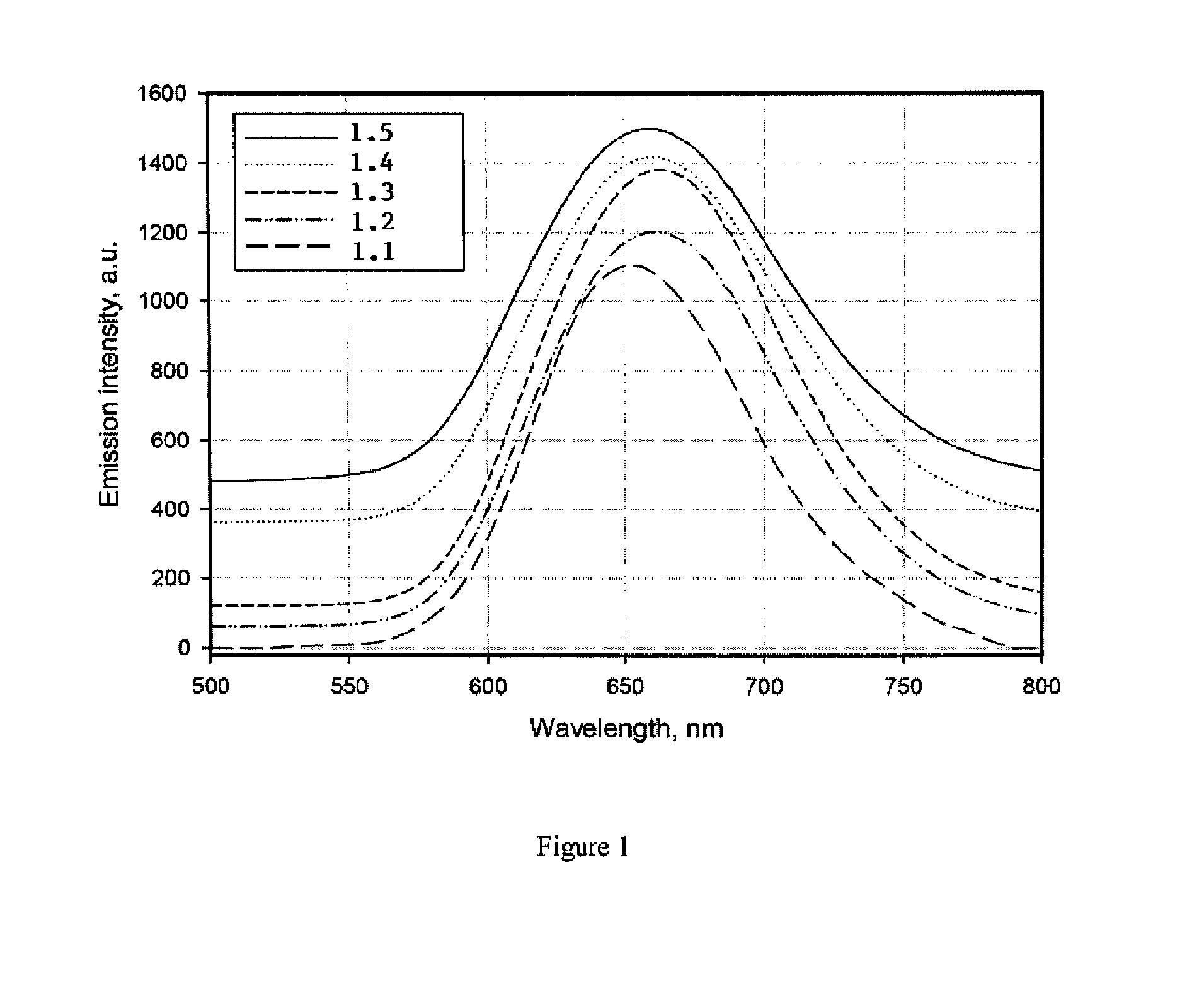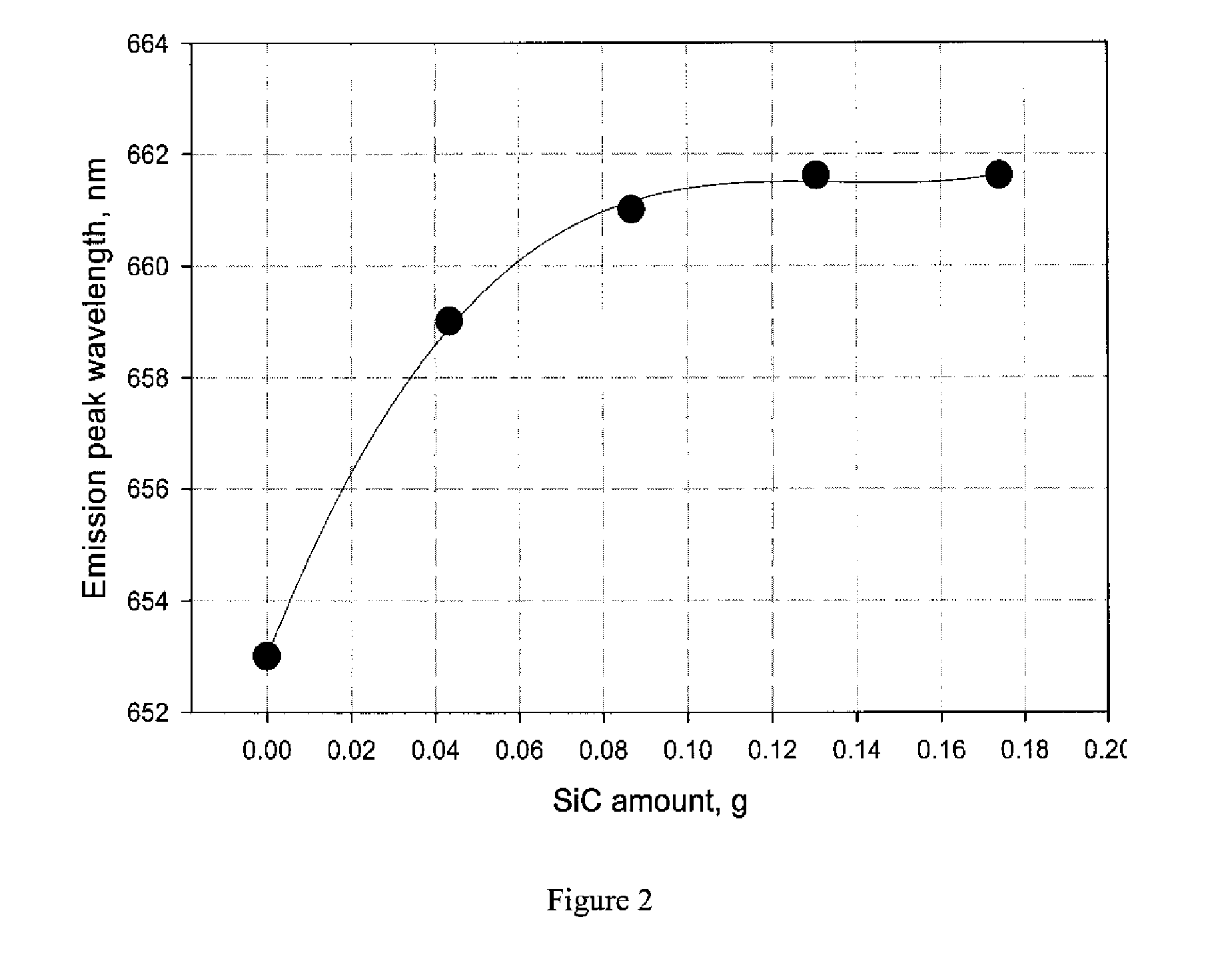Carbonitride based phosphors and light emitting devices using the same
a technology of carbonitride and phosphor, which is applied in the direction of discharge tube luminescent screen, discharge tube/lamp details, luminescent composition, etc., can solve the problems of high thermal stability, difficult to achieve 90% quantum yield at room temperature, and impede the successful application of existing phosphor materials
- Summary
- Abstract
- Description
- Claims
- Application Information
AI Technical Summary
Benefits of technology
Problems solved by technology
Method used
Image
Examples
example 1
The Preparation of Phosphors of Formulation (1)
Example 1(a)
[0103]Powders of Ca3N2, AlN, Si3N4, EuN and SiC were mixed in a designed ratio as listed in Table 1 with a mortar and pestle under the protection of N2 atmosphere. In this series of preparations, the formulation parameter x was fixed at x=0.5 while y was varied from 0 to 0.10. This variation corresponds to an increase of C content and a decrease of the [Al] / [Si] ratio, as seen in Table 1. The mixture was then loaded in a firing boat or crucible and was fired at 1600° C. for 6 hours under N2 / H2 atmosphere. The product powder was then ground and sieved.
[0104]The product is expressed by the formulation of Ca1-xAlx-xySi1-x+xyN2-x-xyCxy:Eu2+. This phosphor emits a red light under blue or nUV light excitation (FIG. 1). In the samples set forth in Table 1, the SiC of each sample was increased from sample to sample. A preparation (sample ID 1.1) that contains no SiC, i.e. [SiC]=0, was prepared as a reference sample. As depicted in F...
example 1 (
Example 1(b)
[0108]Phosphor samples were prepared according to the process described in Example 1(a) using the starting materials and weights listed in Table 6. The product is expressed by the formulation of Ca1-xAlx-xySi1-x+xyN2-x-xyCxy:Eu2+. In these preparations, the x value was systematically increased from 0.45 to 0.6 and the y value was fixed at 0.05. This change lead to a variation of [Al]3+ / [Si]4+ ratio from about 0.81 to about 1.54 across the preparations. When the carbon content is nearly fixed, the unit cell volume increases as the x value increases (i.e. [Al]3+ / [Si]4+ ratio increases). This is ascribed to the fact that the bond length of Al—N (or Al—C) is longer than that of Si—N (or Si—C), and is demonstrated by the changes of the crystal unit cell parameters shown in Table 8 and FIG. 8 where the lattice parameters a, b, and c of Ca1-xAlx-xySi1-x+xyN2-x-xyCxy:Eu2+ (y=0.05, Eu=1 mol %) increase as the value of x increases. Additionally, from the body color and the fluores...
example 2
The Preparation of Phosphors of Formulation (2)
[0109]Powders of Ca3N2, AlN, BN, Si3N4, EuN, SiC and metal Na were mixed in a designed ratio as set forth in Table 9 with a mortar and pestle under the protection of N2 atmosphere. The mixture was then loaded in a firing boat or crucible and was fired at 1600° C. for 6 hours under N2 / H2 atmosphere. The product powder was then ground and sieved. The product is the formulation of Ca1-x-zNazM(III)x-xy-zSi1-x+xy+zN2-x-xyCxy:Eu, M(III)=(Al, B). This phosphor emits a red light under blue or nUV light excitation (FIG. 9). The emission band width increases with the increase of the added SiC amount (FIG. 10), indicating a carbide effect on the fluorescence properties. The phosphors are excited by a light of wavelength from 350 nm to 610 nm, and more efficiently excited by a light of wavelength from 420 nm to 550 nm (FIG. 11). As depicted in FIG. 12, when the phosphors are excited by a green light, for example, at 550 nm, the emission intensity d...
PUM
| Property | Measurement | Unit |
|---|---|---|
| temperatures | aaaaa | aaaaa |
| temperature | aaaaa | aaaaa |
| temperatures | aaaaa | aaaaa |
Abstract
Description
Claims
Application Information
 Login to View More
Login to View More - R&D
- Intellectual Property
- Life Sciences
- Materials
- Tech Scout
- Unparalleled Data Quality
- Higher Quality Content
- 60% Fewer Hallucinations
Browse by: Latest US Patents, China's latest patents, Technical Efficacy Thesaurus, Application Domain, Technology Topic, Popular Technical Reports.
© 2025 PatSnap. All rights reserved.Legal|Privacy policy|Modern Slavery Act Transparency Statement|Sitemap|About US| Contact US: help@patsnap.com



